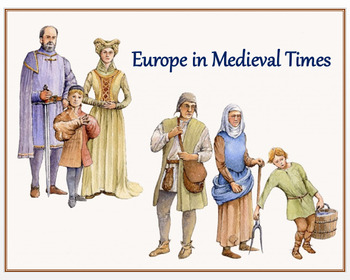Medieval Europe - "The Feudal Way" - Article, Power Point, Activities, Assess
- Zip
Description
This brief Article and Power Point explain the roles of the the three main groups of people in feudal Europe: nobility, clergy, commoners - the connection of the Vikings to the creation of feudalism - as well as, how feudalism was constructed and how it worked. Activities and Assessment included.
Lesson includes:
- 4-Page Illustrated Article
- 30-Slide Power Point Presentation
- Document Based Questions Assessment + Answer Key
- Multiple Choice Assessment + Answer Key
- Primary Source: from "Anglo-Saxon Chronicle"
- Common Core-Aligned Short Answer DBQ Assessment + Answer Key
- DBQ Scoring Rubric (allows students to easily score each other's short answers)
- Brief Article: Becoming a Knight
- Feudal Scaffolded Review + Answer Key
- Feudal Exit Review + Answer Key
- Feudal Crossword + Crossword Key
- Blank Feudal Graphic Organizers
- Graphic Organizer: Four Takeaways
- 3-2-1 Reflective Writing Activity
- Historical Examination Form
- Support from Text Guide
- Visuals
- B+W Printables
- No Prep
- Lesson Duration: 45 - 90 mins. - depending on what is used.
- Can be used as: Classroom / Homework, Distance Learning, Sub Plan
California State History-Social Science Content Standard Addressed: 7.6.3
Store: The Medieval World and Early Modern Times
Link to my Store: https://www.teacherspayteachers.com/Store/The-Medieval-World-And-Early-Modern-Times





